Japanese people are known to be well disciplined in their culture and life style and so are their homes. In other countries you might see this kind of discipline only in rare households or ate military families, but in Japan all of this very common, their habits are their lifestyles. Even in small Japanese children these habits are cultivated since their childhood only. Japanese style holds their culture tightly, their ancient customs and the natural vibe overall.
A traditional Japanese house is known as MINKA in their traditional language, which has several natural features which you will be surprised to know. ZEN which means a peaceful serenity which surrounds all over the Japanese houses and that’s what we need to maintain in ours to make our home look like a Japanese styled home. So let us see some of the features and best ways in which a Japanese home is styled
Tips to Design your House in a Japanese Styled Home
Including Japanese Touch to Your greenery
Japanese people stay connected to their greens and nature, and the best way you can do it too is to bring nature inside your home. Apart from all the green plants that you would want in your home, install some traditional Japanese plants like BONSAI, BAMBOO to give it a Japanese touch. Add plants which have large seek leaves like palm, orchids, also try to have large windows so that you can be very close to nature.
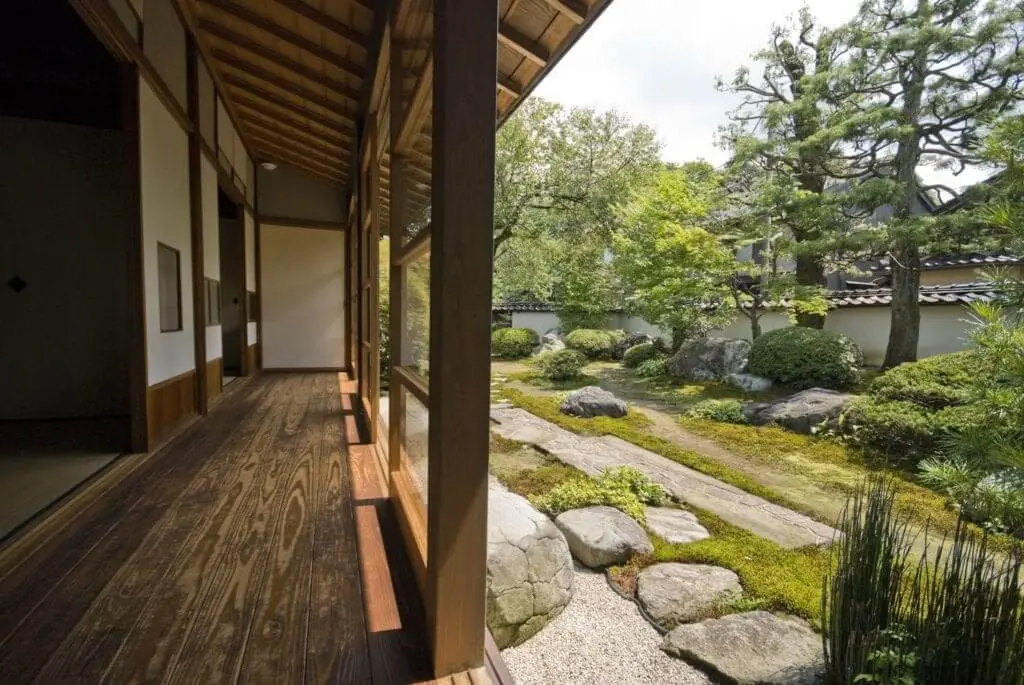

Designing entry way with Genyen and a Small Tea room
This is another important feature of a Japanese home, also known as GENYEN in Japanese language. As soon as you enter this entryway the first thing you would need to do this take off your shoes and put it properly in the side show rack or a small locker which has little space for every shoe type.
You just cannot step into the house with your shoes on , so if you want to create a Japanese style entryway you must have place for keeping shoes on sides, also keep it clean do not try to add a lot of furniture in this area. They also have a small TEA room just beside the entryway.
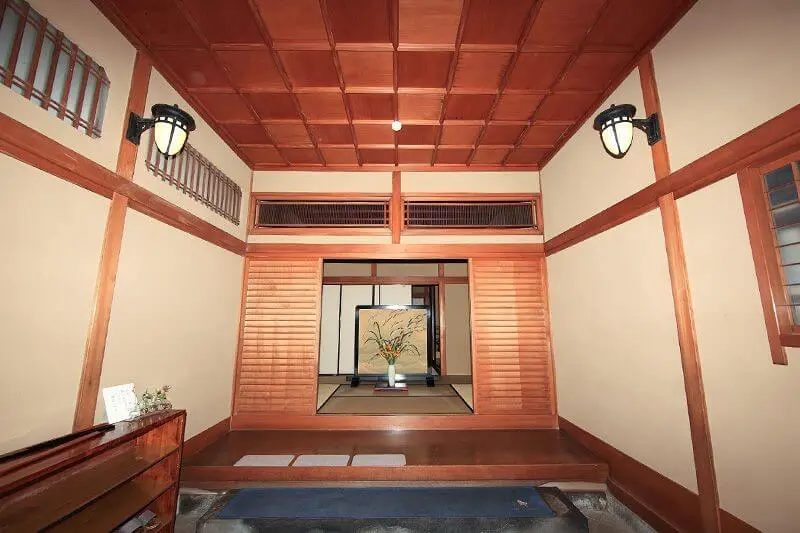
Using single color plain Carpets on Floor
Japanese people are close to nature. So they love having their interaction time, eating time or leisure time all on the floor itself . So you will always find carpets in the room, sometimes they cover the full room and sometimes smaller ones are kept with a seating requirement. These carpets are never heavy on material or designs they are usually simple and plain, mostly of single colour.
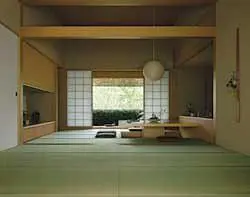
Using Tatami Floors
This is the most important floor layering in Japanese homes , as you know they love using floor space for sitting so they always have TATAMI FLOORS which are naturally mats made of natural, local materials . These mats are put upon the normal carpet flooring in the rooms. They also give a very warm feeling to the room and as well as to the people.
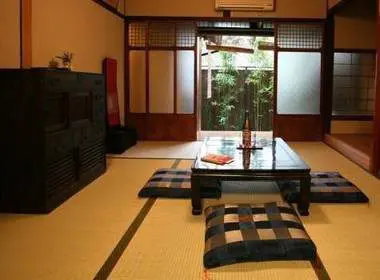
Using Natural Wood for Walls, Ceilings and Floors
As Japanese people likes to go natural, use of wood is very common throughout apart from tatami floors in the rooms. Wooden flooring is used in the hallway these are natural woods of japan. Also wooden panelling on walls and ceiling is very easily found in Japanese homes.
These ceilings and walls of wood are sometime also made with various inscriptions, detailing and designs with some homes giving a pop colour to these walls.
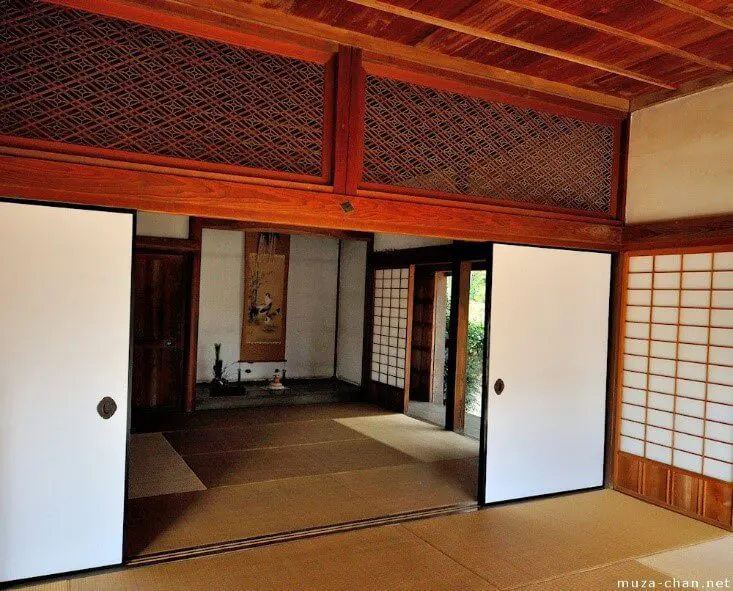
Using Wooden Sliding doors inside the house
In Japanese homes sliding doors are only used normally inside the house be it rooms doors or the hallways. This way privacy is also maintained. These doors are also general mad out of natural wood and finished with some laminate or sometimes painted with natural designs. Sometimes glasses are installed on these doors so that the light can pop into the house.
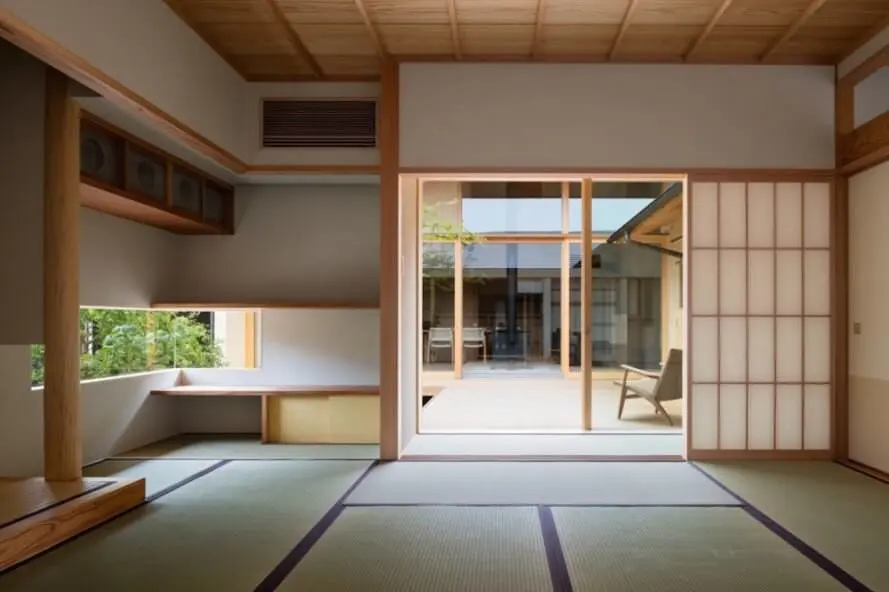
Designing and placing the hallways
Hallways are corridors kind of spaces for circulation through out the house. They are generally narrow with a wooden flooring and are close to the Japanese gardens so that you just need to slide open the door of your room and you will see the hallway facing the garden.
In the evening time, Japanese people just like to sit on the edges of these hallways to enjoy the garden space and greenery. On the above floors levels, these hallways have large windows for ventilation and for a beautiful view of garden.
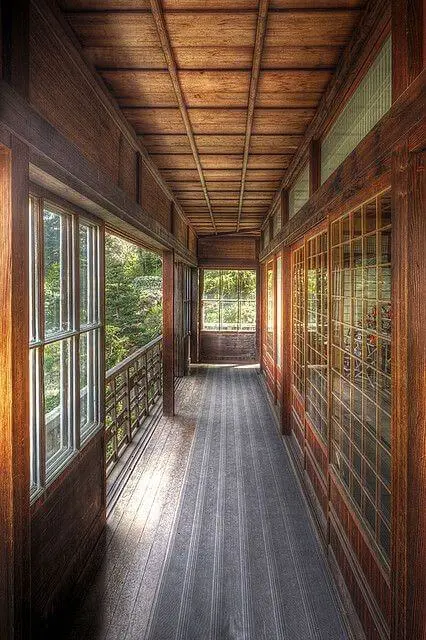
Using Paper screening
Japanese are also very famous for their paper arts like origami. So similarly, they have paper screening on the large windows. Sometimes they have this paper screening partition in living rooms to maintain privacy. They let the sunlight come in but not very much just like how they like it.
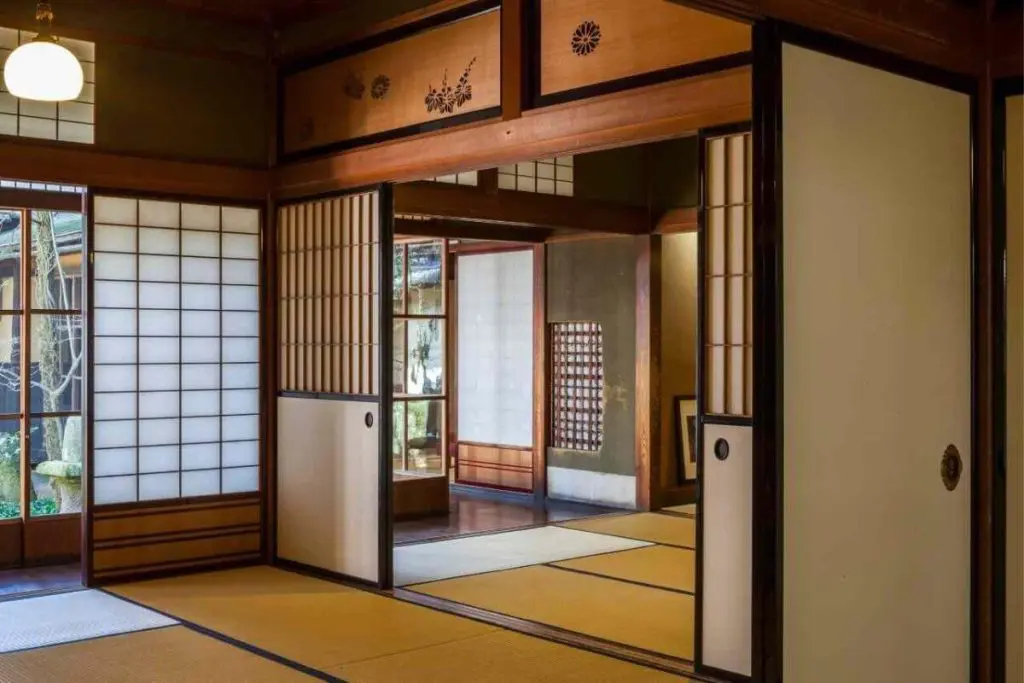
Designing the kitchen japanese way
Japanese kitchen have a lot of hidden features which normal kitchens don’t. Like they always have a fish grilling machine under the stove so that they can directly grill it without the use of stove.
They also don’t use traditional stove but use electrical or manganite stoves fitted inside the slabs. Also they have a hidden storage under the floor which can be opened by a small cut out made on the floor of the kitchen itself.
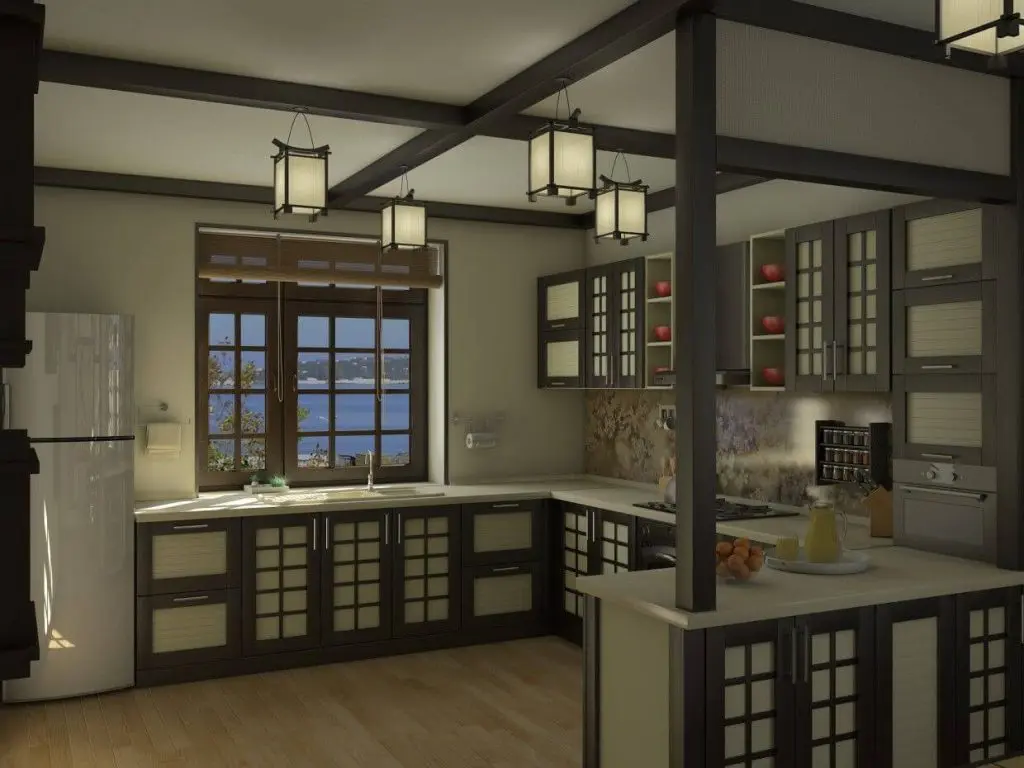
Having a separate Laundry Room
Japanese always have a separate laundry room so that the dirt does not comes inside the house. They do not even combine it with bathrooms. They like to have clean dried cloths all at one place in the laundry room, as you know they are clean and disciplined people.

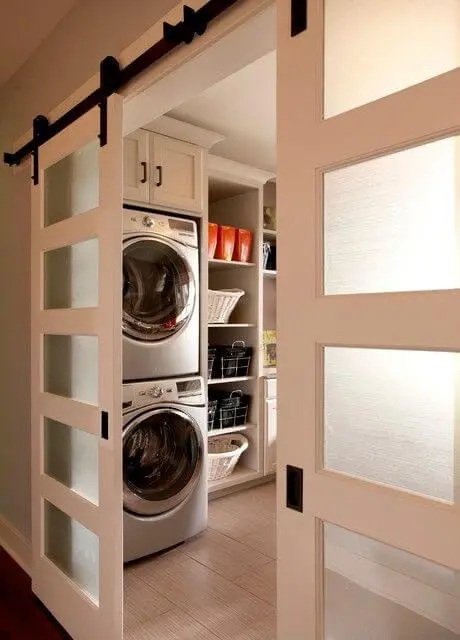
Adding Natural fragrances and Scents
As Japanse people love natural flowers and greenery, you will always find a natural fragrance specially in their bathrooms juts like a SPA which is very divine and makes the space feel fresh. This is another must have in any Japanese home. Even scent from their garden keeps coming inside the home which is very refreshing.
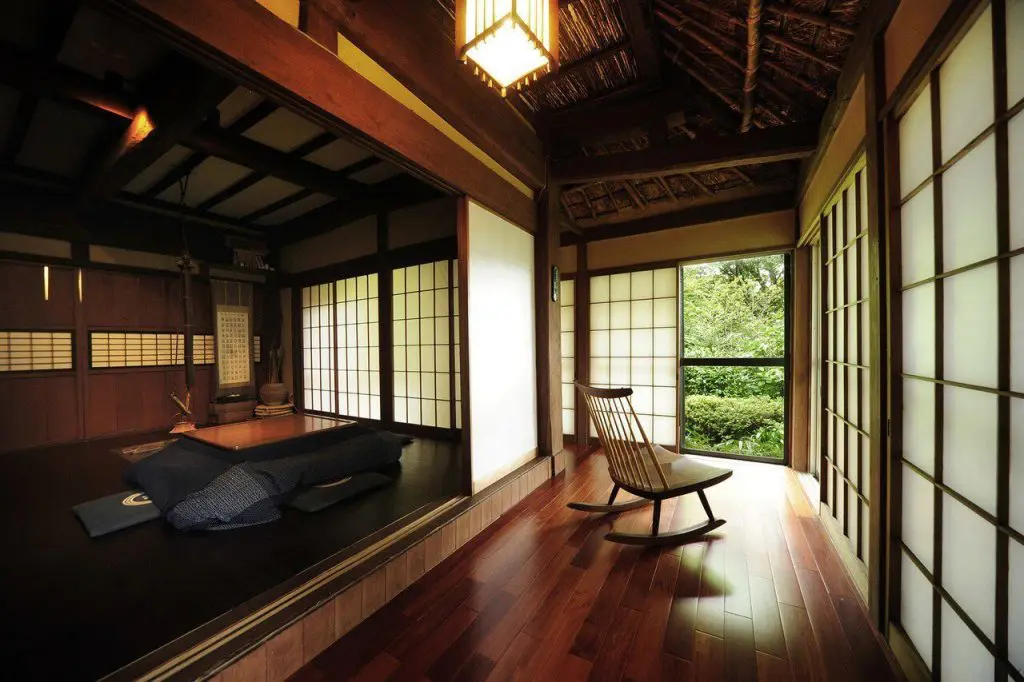
So now you know how rich Japanese people are to their culture. So the least you can do to style your home in Japanese style is to flow their culture, discipline and habits. That makes their home look fresh and clean. Even if it’s a modern Japanese house these are some of the factors which each of them put as a base in any design they create. Use all the natural colours on the walls, natural furniture in raw forms, and also use of antique decorative items.
Keep it natural, clean and green.
– Asmita Madan





